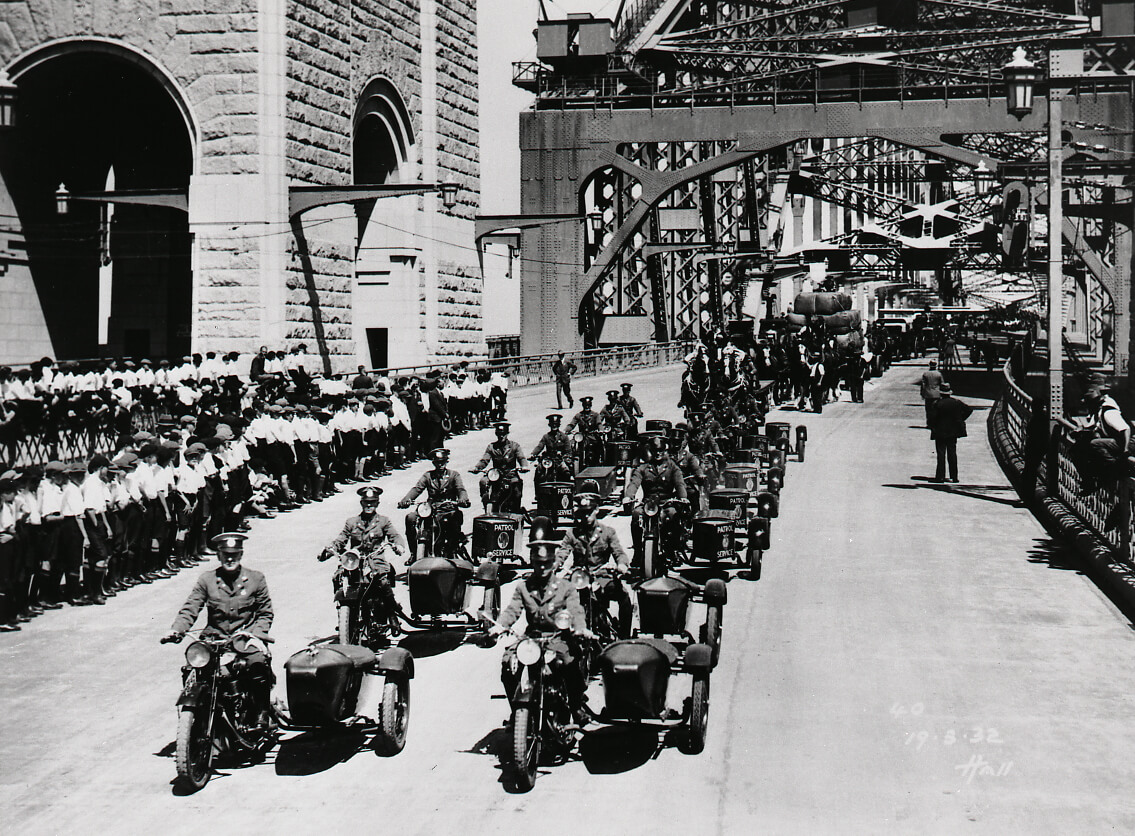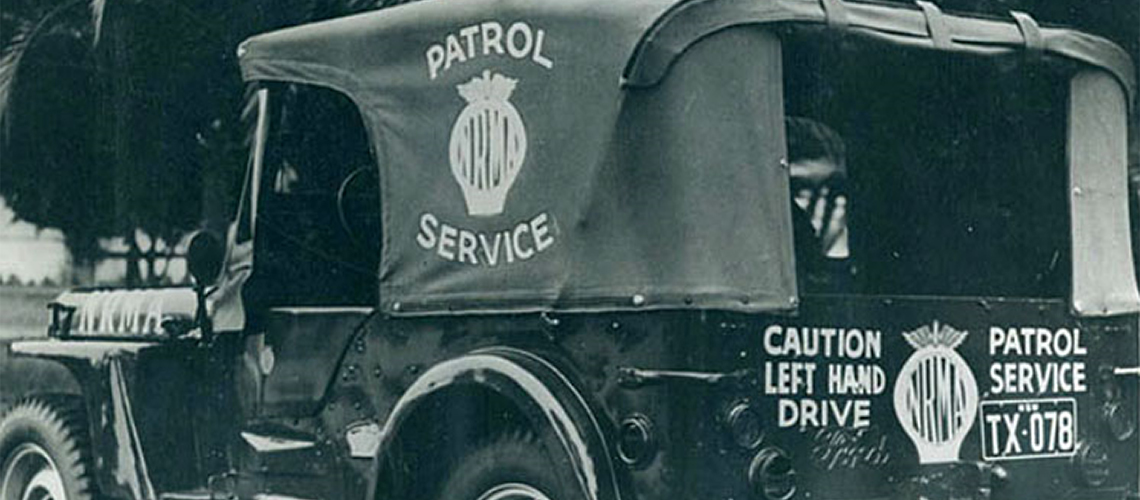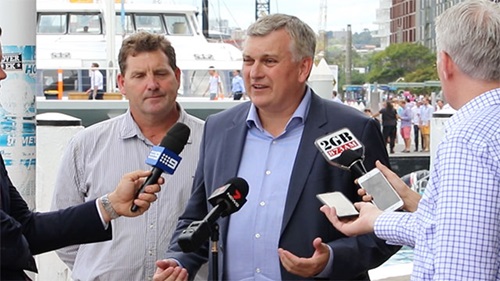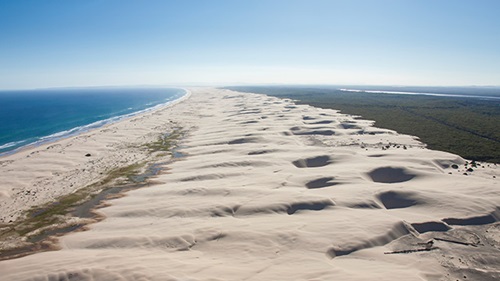ANZAC Day is a sacred day for all of us at the NRMA as we remember those who made the ultimate sacrifice, but it is those who returned – especially from the two World Wars of the first half of the century – who played such a vital role in our organisation.
It is a little-known fact that the first road assistance Patrols sent out in 1924 were comprised almost entirely of returned servicemen: they were valued for their skills and resourcefulness but were also preferred because some struggled to readjust to civilian life.
The freedom of the road, the discipline and dedication required for the role and the camaraderie that came with being part of a regimented team were all especially suited to ex-soldiers who couldn’t easily find a place in an office or factory.

This iconic image of NRMA Patrolmen riding in formation across the Sydney Harbour Bridge during the opening ceremony in 1932 speaks to the military instincts of many of these men, and only a few years later this would be exemplified by their response to the eruption of World War II.
Nearly half of all NRMA staff enlisted in the war effort, leaving a massive skills shortage that needed to be filled to meet the needs of the organisation’s 66,000-plus Members.
In an echo of our current commitment to bring more women into our NRMA car servicing work bays, the gap was covered by women who were initially trained on basic vehicle mechanics so that they could become ambulance drivers.
But many students easily excelled in the initial programs so a more advanced, hands-on mechanical course was introduced.
Empowered by her training, NRMA Staff Member Miss K Broadbent – who scored very highly on her exams – organised a Women’s Auxiliary Transport Corps and successfully trained 506 women to handle trucks, ambulances and motorcycles.
The Auxiliary transported military personnel and Hong Kong evacuees, transferred concert parties to and from military camps and issued road reports to defence authorities.
Due to the shortage of new vehicles during the war years and the lack of parts, people were driving older vehicles that needed repairs more often so Patrols were continually finding new ways to fix parts that would normally be discarded and replaced.
Patrols operating in the central business district also addressed petrol rationing by using bicycles to travel from job to job.
When the war finished, a number of ex-service vehicles were trialled, including army jeeps which were used into the 1950s.
The patrol uniform was altered, with the pants changing from jodhpur-style to straight-legged and a red ribbon added to denote service to the war effort.
The success of the Women’s Transport Auxiliary saw a new piloting service added where female drivers piloted country members through the city, which continued until the 1980s.
But the most enduring link was the ascension of George James from Australian Army sergeant in World War II to NRMA CEO in 1979.
This coincided with rapid growth in car ownership and NRMA Membership: we hit one million Members in the 1970s and were approaching two million Members by the time Mr James retired in 1987, after eight years in the top job and decades of service to the organisation.
Mr James passed away in February 2017 but his influence and that of so many other war veterans lives on in the NRMA’s ethos and actions.




